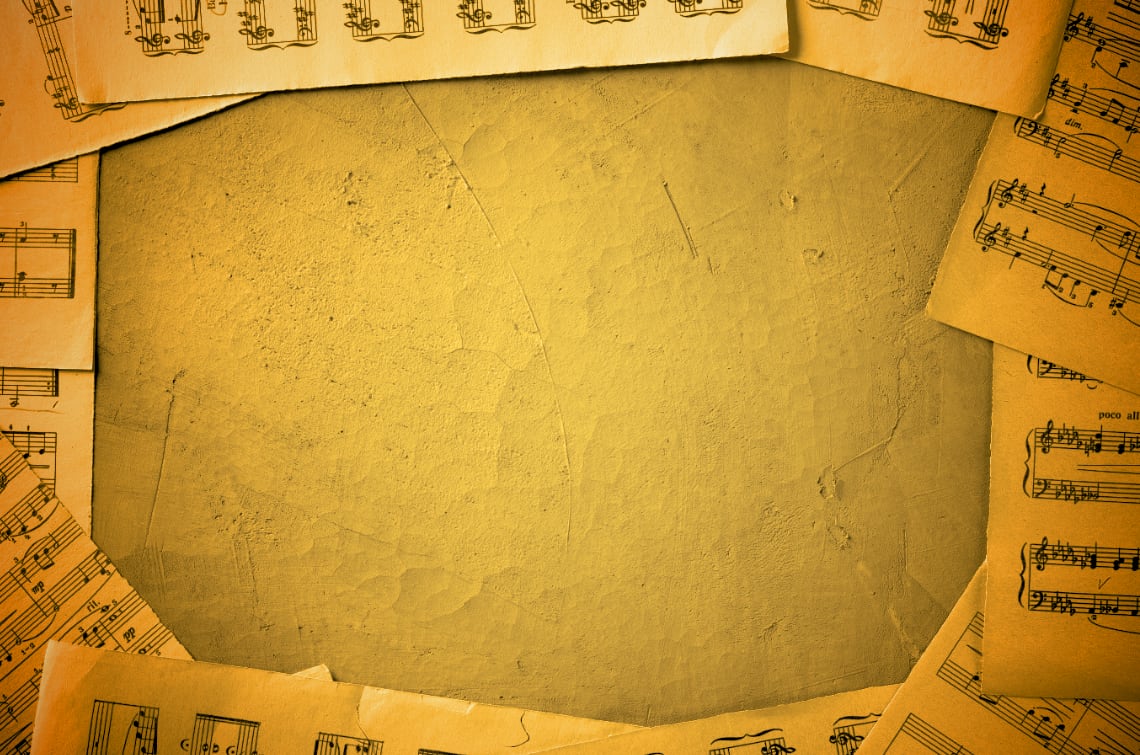Article index
What is the role of the melody in a song?
In a historical moment in which it seems that the rhythm took over the melody, one wonders what role the latter has in the songs. Needless to say, it happens to each of us daily to have in mind and to intone a melody we like, that we have in our memory or simply that we have laid fortuitously on the radio or in a particular context. If some words run away in memory, what does not escape is certainly the melody.
In the singing to it is added the text that conveys a message, instead absent in instrumental music that leverages other communication aspects. This observation allows you to say that melody alone identifies any song. The "Sarrabanda" television music game reminds us in which in a melodic fragment of a few seconds the competitor managed to recognize the song and pronounce the title! Each element present in a music piece has a precise function both on a compositional level and on the emotional one and for the executor and the listener, but the melody remains the main element and identity card of a song.
When singing a chapel or a melodic instrument is played, you are not supported by harmony. In fact, the latter can be absent and, when present, varied thanks to substitutions of agreements that suggest particular "environments". The arrangement can even characterize the genre (pop, popular, jazz, blues, funky etc.), but not to affect the recognition of the song itself if the melody has not been touched.
Despite this observation, it is curious to know that often the input for writing a song is given by a concatenation of agreements and by a rhythmic idea that can remain or get lost in the definitive execution. This, however, is a topic that competes more writing.
The involution of the melody
 The melody that has always characterized the song, especially in Italy starting from Bel Canto, throughout history has undergone an involution both in the composition and in the vocal interpretation. If we compare a lyrical air with a song of the first decades of the twentieth century for example. "Talk to me of love Mariù" or "live" interpreted respectively by Vittorio De Sica and Tito Shipa, we find many affinities, but if we compare it with a contemporary song we realize that the melodic aspect has been reduced to a minimum.
The melody that has always characterized the song, especially in Italy starting from Bel Canto, throughout history has undergone an involution both in the composition and in the vocal interpretation. If we compare a lyrical air with a song of the first decades of the twentieth century for example. "Talk to me of love Mariù" or "live" interpreted respectively by Vittorio De Sica and Tito Shipa, we find many affinities, but if we compare it with a contemporary song we realize that the melodic aspect has been reduced to a minimum.
Today, there is even a contraction and fragmentation of melodic and textual given both by both the compositional idea and from the interpretation. We even arrive at winds that interrupt the word or to move the emphasis within the same that sometimes also compromise the understanding of the text. "M%n" by Tha Supreme is an example.
When this change has occurred, it is difficult to establish it. Certainly author music had its part by favoring the text compared to the melody. In songs such as " Bocca di Rosa ", De Andrè almost speaks and does not need to bring out the voice, long and tied notes. The exhibition and melodic contraction emerges above all in the stanzas that revolve around a few often replied notes. Even the refrains, which melodically open more, are sung with "measure".
The influence of rap should not be forgotten with its hybrid style between speech, prose and singing that move on a syncopated phrasing. At this point several aspects are intertwined and different considerations open both on the elements that characterize a musical genre and on the interpretation in general.
The same song can be arranged and moved to a musical context defined within a certain genre, and can also be interpreted in a more classic way, singing, and in a more "dry" way near the speech. This is why, each of us, when listening to a song, also selects the version that prefers especially when it comes to a piece that has ridden the story.
Did the rhythm overwhelm the melody?
Say that the rhythm has currently taken over the melody could be reductive and perhaps even a generalization. However, what currently listens to most young people can lead us to think about it. "Brivido" by Gue Pequeno, "My intolerant part" of Caparezza, "Brnbq" by Sfera Ebbasta, Ghali's "Dende", "Zoo de Roma" by Noyz Narcos, "Capo" of Geolier make these considerations evident. The urgency to communicate the text takes over and is well accompanied by the rhythmic pulsation of the arrangement. Other songs such as Mahmood's "Barrio", "H24" by Lazza, "Mare at night" by Clementino, "I chose me" by Rocco Hunt, "Crazy Love" by Marracash, "Kumite" of Salmo, preserve the melody even if At first listening it is not always perceived.
It is to be wondered why and how you change the perception and definition of the elements that make up a song. These are probably balanced balances. The melody can unfold with a narrow or wide trend or on a greater or lesser extension. However, it cannot ignore the rhythm that is intrinsic in it and is one of the elements on which it develops and identifies itself. This is demonstrated by the fact that if you change the duration of some note, another melody emerges. Related notes close to each other and short increase the rhythmic sense as if to cancel the intervals, long notes and on a wider staircase or intervals instead strengthen the melodic perception.
At the same time, the rhythm suggested by the arrangement captures attention and stimulates the body movement and the physical participation of the listener. We therefore move, both by treating the melody, and the rhythm, on a psycho-emotional and body perceptual plan that needs a separate discussion.
Listening to Adele, Ed Sheeran, Lady Gaga, and infinite other international successful interpreters or, remaining more simply in the Italian territory, Elisa, Laura Pausini, Tiromancino, Negramaro, Ermal Meta and many others wonders if it is really lawful to affirm that the rhythm has supplanted the melody. The same, if we think that in the world the Bel song still depopulated, there are examples of Bocelli and the flight. They are therefore of styles and genres aimed at different market slices as well as taste choices. Considerations of this type keep alive the discussion of music critic which cannot be free from its cultural and social context.
It is natural to ask in which direction the music will go, however, beyond the multiple analyzes and observations, what we can with certainty to affirm is that the melody remains what identifies the song and consecrates it over time. It is worth preserving it!
Read also the article: Italian songs to trust themselves








